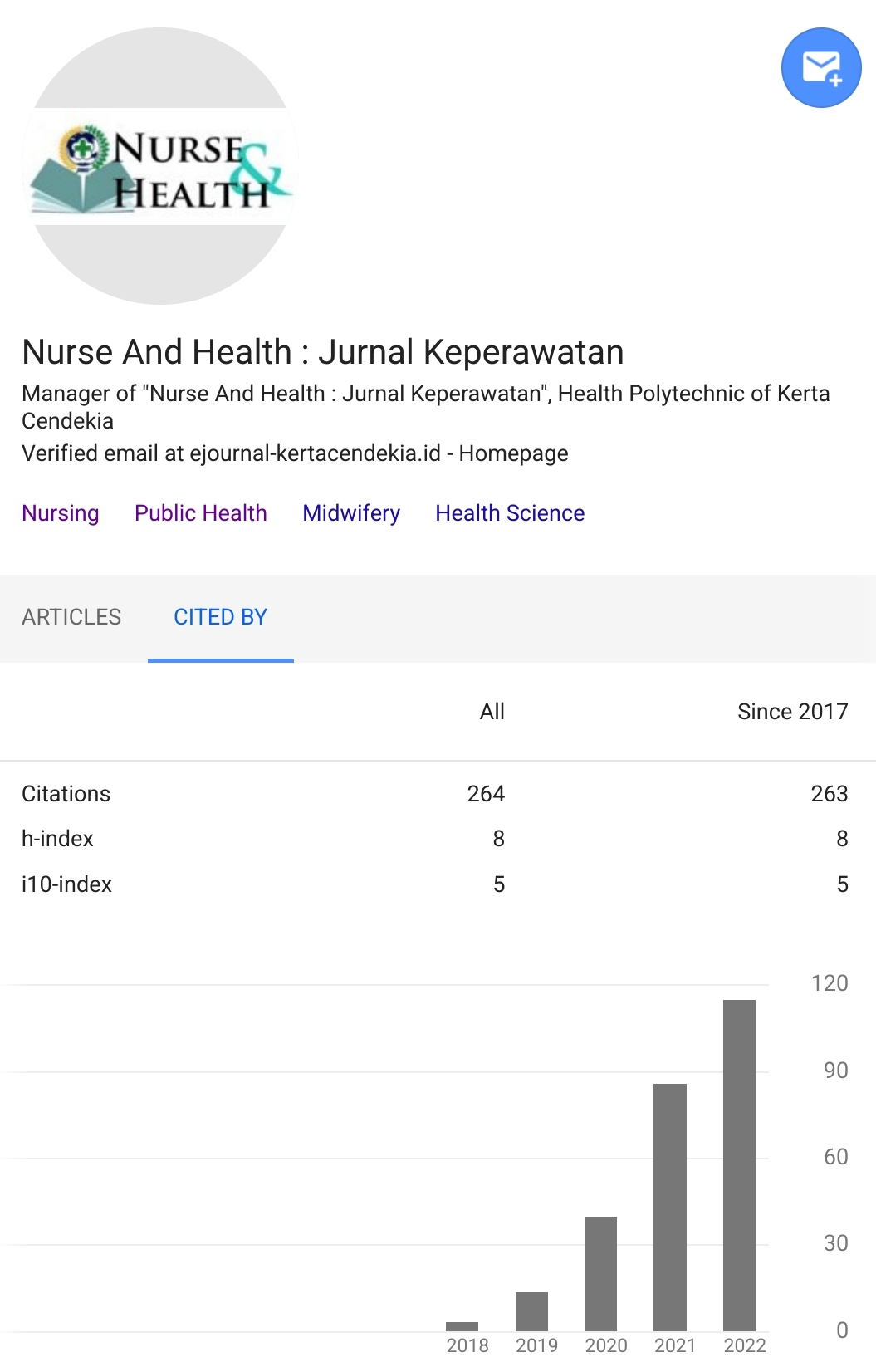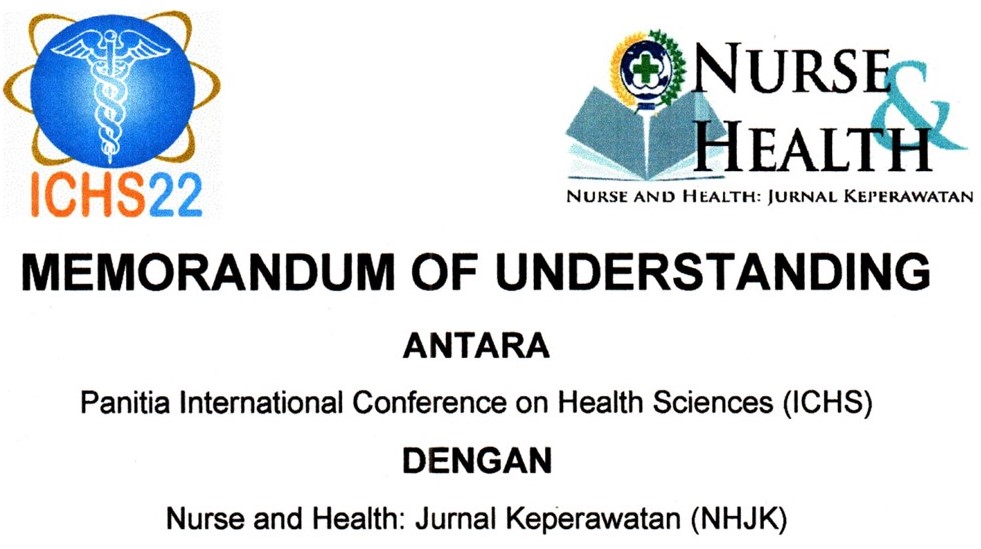THE INFLUENCE OF KNOWLEDGE AND DISASTER WARNING AND THE PREPARATION OF HIGH SCHOOL STUDENTS IN FACING EARTHQUAKE AND TSUNAMI
DOI:
https://doi.org/10.36720/nhjk.v8i2.115Abstract
Background: The school community's readiness to face disasters is still considered lacking in Indonesia. Schools as educational institutions are expected to provide an important role for disaster risk education, so students have the provision in dealing with disasters.
Objective: This study aimed to identify the factors associated with the preparedness of high school students in dealing with the earthquake and tsunami disasters.
Method: This study is analytic survey with cross sectional design. The population in this study were all high school students in Bengkulu City in 2018/2019 academic year. Two stages cluster sampling method have been used in this study. The researcher randomly chooses one high school that will be used as a research location, SMAN 2 Bengkulu City were selected as the result, then the researcher randomly chooses again to determine which class will be the sample, class of XI was chosen with a total of 340 students who spread across 11 classes. The researchers calculated the sample size by using the Slovin formula with the results of 220 respondents. The samples were selected by using proportional random sampling technique, and chosen based on the number of students in each class. Data collection in this study used an instrument in the form of a questionnaire adopted from LIPI consists 65 questions about knowledge and 10 questions about disaster warning and 36 questions about preparedness. The collected data is then processed and analyzed using computer program software and the data were analyzed by using univariate, bivariate and multivariate logistic regression statistical tests
Result: The results of this study showed that preparedness of 220 respondents were obtained a mean of 23.57 with a standard deviation of 7.844, knowledge were obtained a mean value of 46.69 with a standard deviation of 8.229, attitudes were obtained a mean value of 60.01 with a standard deviation of 6.210, an emergency response plan were obtained a mean value of 14.95 with a standard deviation of 3.050, and disaster warning were obtained a mean value of 7.19 with a standard deviation of 2.408. Factors related to student preparedness in dealing with disasters were included the level of knowledge (p = 0.020), attitude (p = 0.280), emergency response plan (p = 0.000), disaster warning (p = 0.000).
Conclusion: There is a relationship between the level of knowledge, and disaster warnings with disaster preparedness. The most dominant factor in disaster preparedness is disaster warnings.
Â
Key words: Preparedness, knowledge, disaster warning.
Downloads
References
American Cancer Society. (2012). Fatique BNPB. (2011). Penanggulangan Bencana. Retrieved from https://bnpb.go.id/uploads/migration /pubs/380.pdf
BNPB, B. dan U. (2013). Kesiapsiagaan menghadapi bencana Kota Padang 2013. Pilot Survei Pengetahuan, Sikap dan Perilaku. Jakarta: Pusdatin Humas BNPB.
Husna. (2011). Faktor-faktor yang Mempengaruhi Kesiapsiagaan Bencana Di RSUD ZA Banda Aceh. Idea Nursing Jurnal.
Devi A, S. D. (2015). Awareness on earthquake preparedness A key to safe life. International. Ournal of Nursing Research and Practice.
Kajian Bahaya Puslitbang Geologi ESDM Bandung. (2006).
LIPI, UNESCO, I. (2006). Pengembangan framework kajian kesiapsiagaan masyarakat dalam mengantisipasi bencana. Retrieved from http://www.coremap.or.id/i/.pdf
MPBI-UNESCO. (2007). Kajian Kesiapasiagaan Masyarakat Dalam Menghadapi Bencana Gempa Bumi Dan Tsunami Di Nias Selatan. Retrieved from http://unesdoc.unesco.org/ images/0015/001536/153617ind.pdf
Rachmalia, Astuti, P. (2012). Pengetahuan kesiapsiagaan tsunami pada masyarakat Teupah Barat, Kabupaten Simeulue. Idea Nursing Journal. Retrieved from http://www.jurnal.unsyiah.ac.id/INJ /article/ view/1589
Syafrizal. (2013). Tingkat pengetahuan, kesiapsiagaan dan partisipasi masyarakat dalam pembangunan jalur evakuasi tsunami di Kota Padang. Retrieved from http://ejournal.unp.ac.id/students/ index.php/pgeo/article/download/582/34
Taghizadeh A, Khoshnam, RM, K. A. (2017). Midwives’ professional competency for preventing neonatal mortality in disasters. Health in Emergencies and Disasters Quarterly.
Triyono, T. (2011). Panduan Monitoring dan Evaluasi Sekolah Siaga Bencana. Jakarta: LIPI Press
Undang Undang Republik Indonesia. (2007). Penanggulangan Bencana.
Downloads
Published
How to Cite
Issue
Section
Citation Check
License
Authors who publish with Nurse and Health: Jurnal Keperawatan agree to the following terms:
- Authors retain copyright licensed under a Creative Commons Attribution-NonCommercial 4.0 (CC BY-NC 4.0), which allows others to remix, tweak, and build upon the authors' work non-commercially, and although the others' new works must also acknowledge the authors and be non-commercial, they don't have to license their derivative works on the same terms.
- Authors are permitted and encouraged to post their work online (e.g., in institutional repositories or on their website) prior to and during the submission process, as it can lead to productive exchanges, as well as earlier and greater citation of published work (See The Effect of Open Access). Authors can archive pre-print and post-print or publisher's version/PDF.









